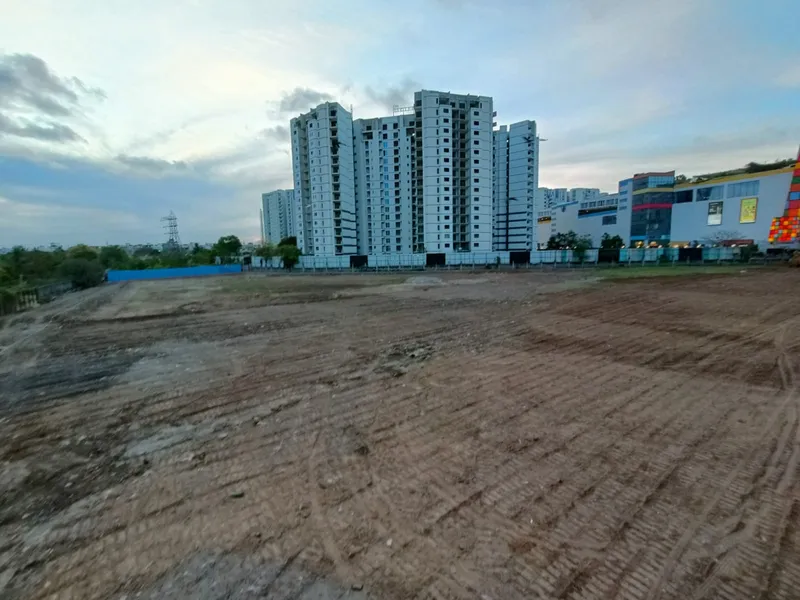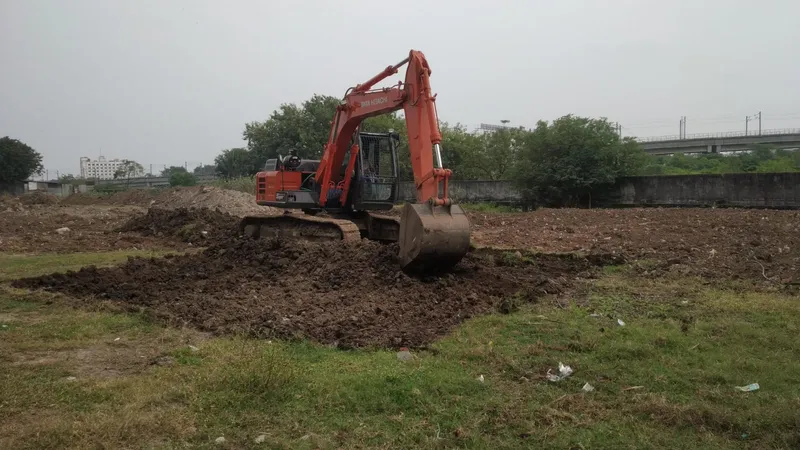A forest in Chennai: An environmentalist converts urban wasteland into green spaces
A four-acre land located at the heart of the bustling commercial hub in Anna Nagar, Chennai, is now an eco forest and play area. Environmentalist Arun Krishnamurthy tells us how.
Over a year ago, a passerby would’ve easily missed an abandoned plot of land on the busy Anna Nagar junction in northwest Chennai. Located right on the banks of the Cooum river, this land degrading with weeds was a dumping site for construction debris and commercial waste.
As is the case with any open abandoned land within city limits, residential communities, neighbouring hospitals, and commercial establishments had overrun it as a result of which, the otherwise fertile land on the riverbank had lost its nutritive character and degenerated into a concrete strip.
“But with a little work, nature has demonstrated its unique power to repair and regenerate itself even after years of exploitation—if only given a chance,” Arun Krishnamurthy, Founder of the Environmentalist Foundation of India (EFI) in Chennai, tells SocialStory.
In early 2022, EFI started work on this project and called it Kanagam (a Tamil word for forest). The land is designated as Open Space Reservation (OSR), which as per Development Control Rules for the Chennai Metropolitan Area, should be 10% of the area of a developmental plan spanning over 10,000 sqm and be earmarked for recreational and outdoor use. This is also mandated by the Supreme Court.
Instead of building an urban park with walking tracks and ornamental plants—which are typically non-indigenous—EFI decided it would create what it calls a ‘co-existence zone’ where nature and people benefit from each other.

The site before EFI started planting the forest
In March last year, EFI started planting native species such as neem, pongamia, peepal, banyan, and palm, in addition to berry and nectar-bearing saplings. They continued planting in a phased manner till October.

The site now, after EFI's afforestation drive
“Today, we have 1,700 trees and 1,000-odd flowering and berry-bearing plants (such as mango, jackfruit, pomegranate, and guava that are expected to start bearing fruit in about four years). They have survived two harsh summers and grown into 10-15 foot tall trees. We expect them to grow into a dense forest in less than a year,” says Krishnamurthy.
The greenery covers 60% of the total OSR land, and the remaining 40% is taken up by a football court, a volleyball court, and a play area for children. One stretch of the land is allotted for composting wet waste from the apartments nearby and gathering mulch from the forest, which will be put back into the vegetation.
Unlike in a park, the walking track circumventing the land is made by levelling the earth as opposed to installing paver blocks and concrete fences. The only vegetation here is native trees, and not ornamental plants and Korean grass paths. “Ornamental plants don't bring the kind of value addition tree foliage does—in terms of groundwater retention, shade cover, temperature regulation, and oxygen fixation,” Krishnamurthy notes.
He takes SocialStory to a hardened concrete block of brick, tar, and cement in one corner—the only area on this piece of land that remains irredeemable.
“We started by digging 3-4 feet deep trenches, and this kind of construction debris was all we found,” says Krishnamurthy. “We dug it all out and replaced it with earth, red soil and clay, and levelled it up with a roller so that people can walk and children can play.”
He says for the locals and visitors of the neighbouring VR Mall, Kanagam will be so much more than just a selfie spot.
“Everyone wants an aesthetic park with concrete structures and an 'I love Chennai' selfie point with lights around it. What we are promising here is the abundance of unaltered nature and an ecologically diversified vegetation patch, which would give birth to new biodiversity. You will find dragonflies and frogs—since it’s adjacent to a river—and yes, mosquitos too!” Krishnamurthy says.
Support from authorities
Kanagam is the first project of its kind that is supported by the Greater Chennai Corporation’s (GCC) Namakku Naame Scheme launched last year, which empowers the community to implement public projects and maintain them. EFI is in talks with GCC and residential groups for the upkeep of the project.
“We’ve had a strong working relationship with the GCC for the last nine years, and they have been consistently supportive of our vision, which has helped us a lot,” says Krishnamurthy.

EFI started working on the site by digging 3-4 feet deep trenches, and replaced all the construction debris that came up, with earth, red soil and clay, before levelling it up
Abdul Rahaman, Regional Deputy Commissioner (Central), GCC, says, Kanagam came as a natural extension to the activities that the Tamil Nadu government has been carrying out under the Chennai Rivers Restoration Trust to bring the Cooum river back to life.
The river originates from the surplus course of the Cooum tank in Tiruvallur district. It runs east for a distance of about 65 kilometres and joins with the Bay of Bengal downstream of Napier Bridge, traversing a distance of 20 kilometres within Chennai city limits. “Since this piece of land is adjacent to the river, we saw the afforestation as a conducive step towards our goal for Cooum river,” says Rahaman.
Working with communities
Krishnamurthy owes his environmental awareness and conservation instinct to his childhood years in the suburbs of Mudichur, which he says was replete with natural wildlife and freshwater bodies. “I went to study microbiology at Madras Christian College, which is a 365-acre campus amidst a forest,” he says.
He was a member of an environmental group that visited zoos to volunteer and restored small ponds in and around Tambaram and Mudichur.
Krishnamurthy started EFI in 2007 as a civic voluntary movement for restoring neighbourhood waterbodies by involving local communities. Today, the initiative is supported by 47 CSR partners. It works across 18 states where it has restored 357 waterbodies and created 63 afforestation sites.
In Chennai, the conservation group is maintaining 46,000 trees and has created six afforestation pockets, located mostly in the suburbs. Kanagam is the only project of its scale and kind the team has created right in the middle of a bustling, upmarket commercial hub.
Krishnamurthy’s larger vision for Kanagam is to create a display museum inside shipping containers, along with a nursery, a water conservation project, and a learning centre where biology classes can be held for school students. “We are awaiting permission from the GCC,” he says.
“Shipping containers are cost-effective, and as per our calculations, in a budget of around Rs 55 lakh, we can inspire thousands of students to learn about the beauty and power of natural habitats, and possibly create a generation of future conservationists,” he says.
Edited by Kanishk Singh






